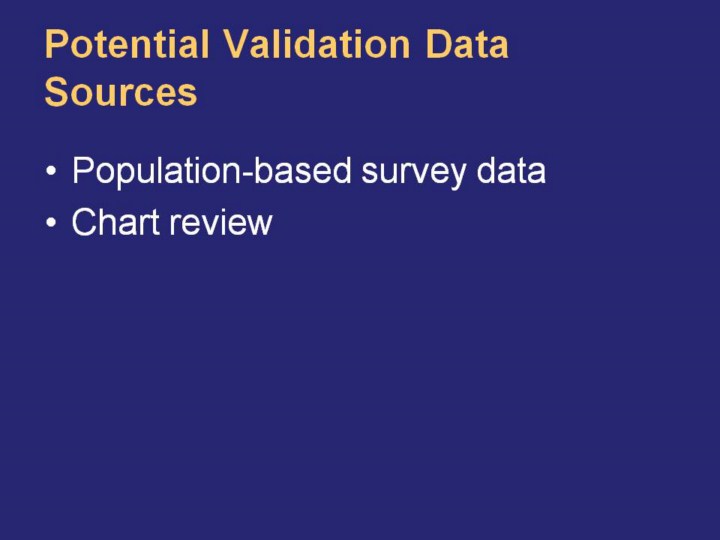| front |1 |2 |3 |4 |5 |6 |7 |8 |9 |10 |11 |12 |13 |14 |15 |16 |17 |18 |19 |20 |21 |22 |23 |24 |25 |review |
 |
Population-based survey data (in which surveys are administered to a sample that is theoretically representative of an entire population) can potentially be used to validate administrative data, if cases identified in the population-based survey can be linked to administrative data. Surveys are advantageous in capturing individuals that have had care provided to them at multiple sites or have not been recently diagnosed with a disease. Additionally, for those population-based surveys that have large sample sizes, rare diseases may be adequately captured.
It is important to be aware of some limitations in this methodology. For example, the self-reported nature of item responses makes this methodology susceptible to recall, ascertainment, and social-desirability biases. Population-based surveys are resource-intensive, both in terms of finances and time. Additionally, certain population groups may not be well-captured (e.g., homeless).
Although chart review data is considered by some to be an ideal gold standard, previous research recommends a cautious approach when conducting population-based validation studies using medical charts. Medical chart reviews offer an ‘objective’ clinical record (as compared to ‘subjective’ survey responses), but are often site- and time-specific, as well as being extremely resource-intensive (Hux et al., 2002).
|